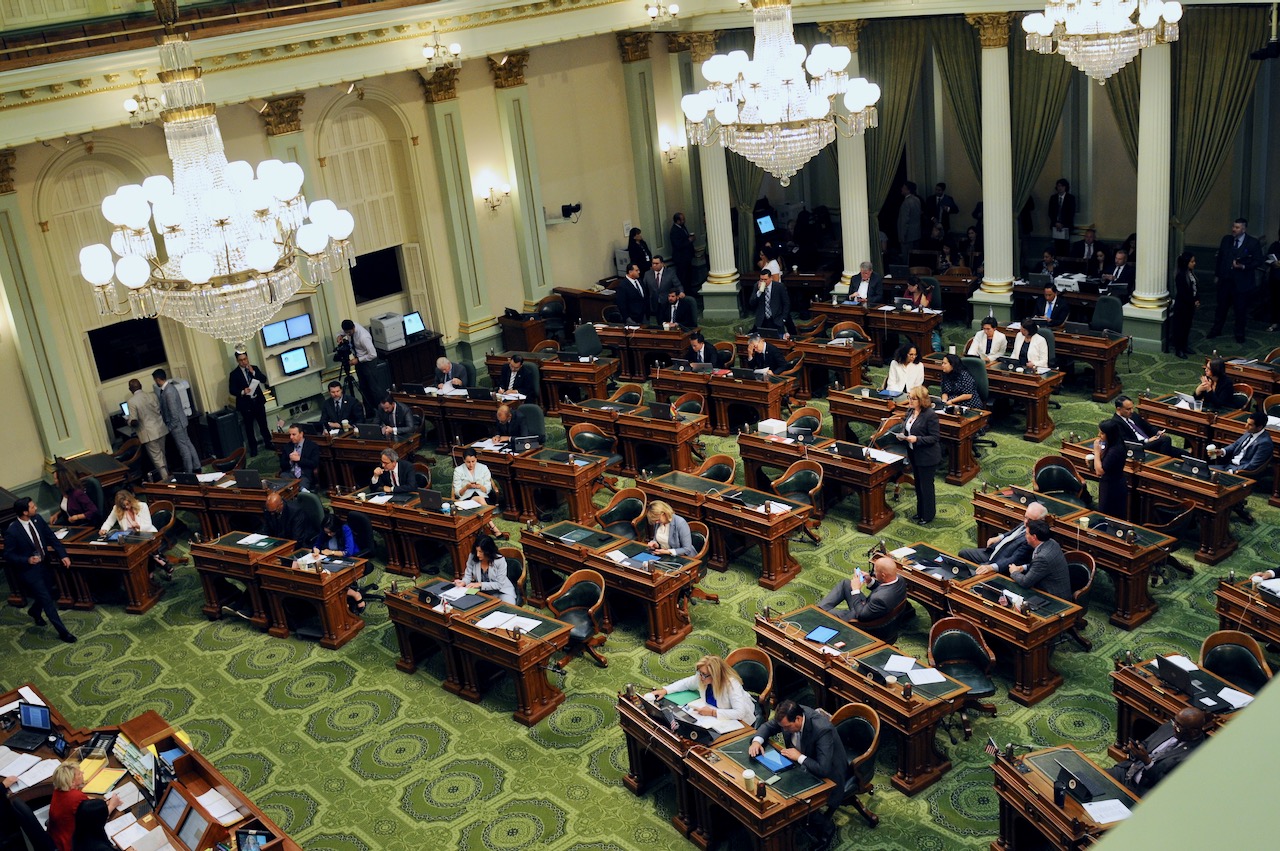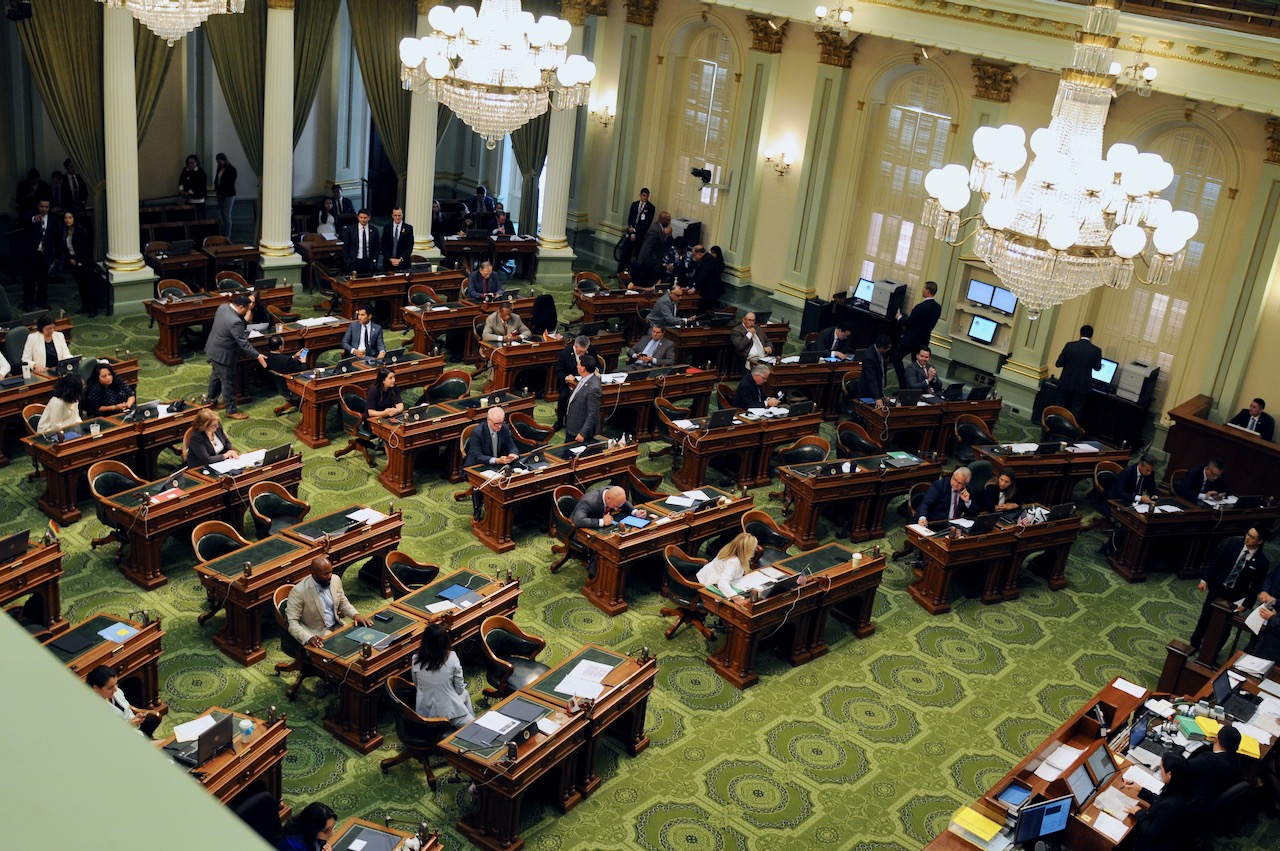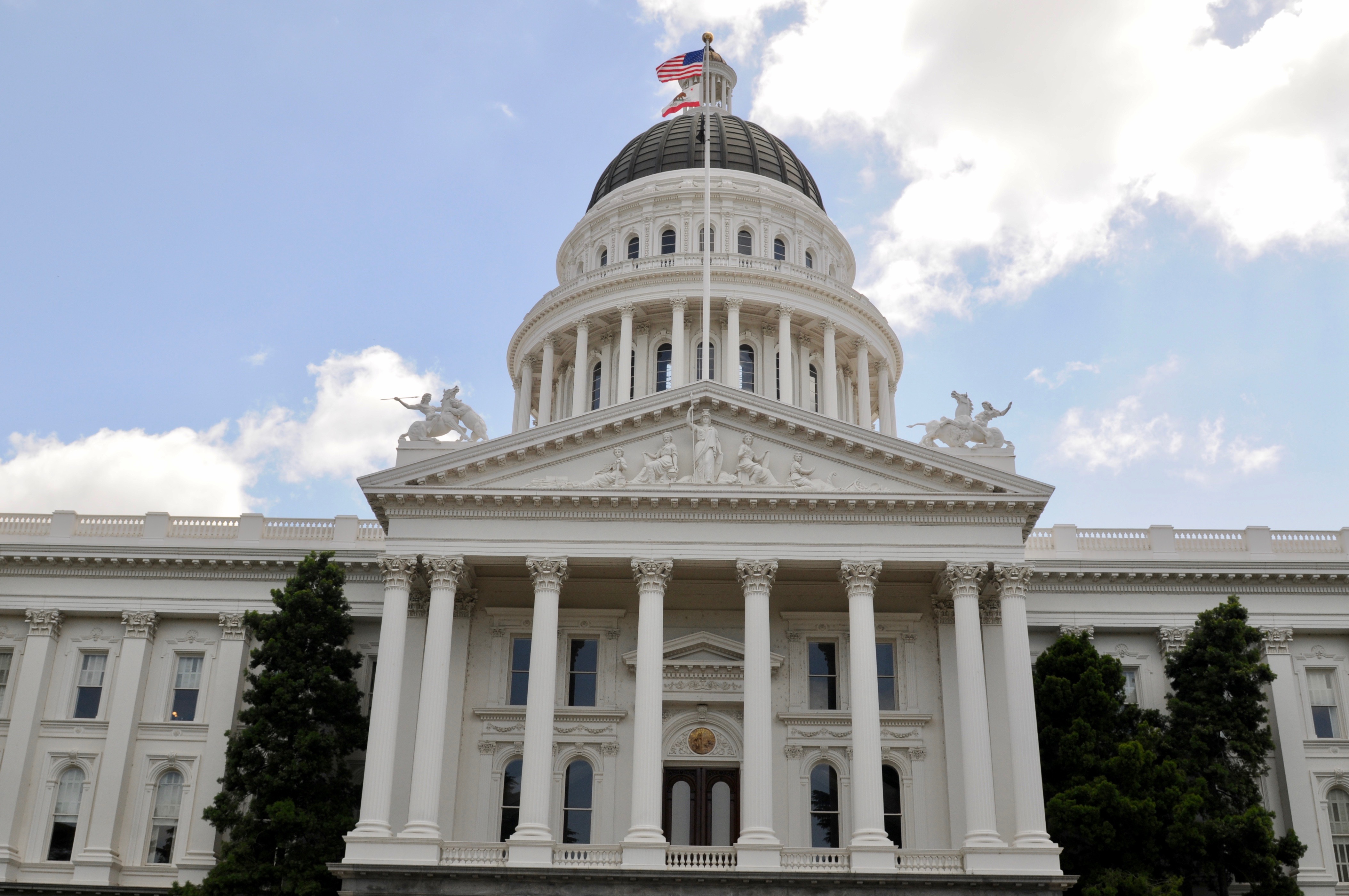
The Legislative Bill Room, California State Capitol. (Photo: ca.gov)
State-Mandated Local Programs in California Legislation
The California Constitution and California Government Code describe in detail a state-mandated local program
By Chris Micheli, October 25, 2020 8:27 am
You may have noticed while reading a California bill that, at the end of the Legislative Counsel’s Digest, there are four “keys,” which identify the vote required for passage of the bill, whether the bill contains an appropriation, whether the bill will be referred to a fiscal committee, and whether the bill contains a mandated local program. This last bill key will appear as either “Local Program: no” or “Local Program: yes.”
What is a mandated local program? Both the California Constitution and the California Government Code describe in detail a state-mandated local program. As a result of these laws, a California bill is identified as mandating or not mandating a local program that requires reimbursement of costs by the state.
The California Constitution requires the state to reimburse local agencies and school districts for certain costs mandated by the state. Article 13B was added to the Constitution by Proposition 4 on the November 6, 1979 ballot. It contains fifteen sections, including Section 6, which deals with state-mandated local programs:
Section 6 essentially provides that, whenever the Legislature or any state agency mandates a new program or higher level of service on any local government, the State must provide a subvention of funds to reimburse that local government for the costs of the program or increased level of service, except that the Legislature may, but need not, provide a subvention of funds for the mandates. This applies to a mandate only as it affects a city, county, city and county, or special district.
Section 6(a) specifically provides that the Legislature may, but need not, provide a subvention of funds for the following mandates:
(1) Legislative mandates requested by the local agency affected.
(2) Legislation defining a new crime or changing an existing definition of a crime.
(3) Legislative mandates enacted prior to January 1, 1975, or executive orders or regulations initially implementing legislation enacted prior to January 1, 1975.
(4) Legislative mandates contained in statutes within the scope of paragraph (7) of subdivision (b) of Section 3 of Article I.
In addition, statutory provisions establish procedures for making this reimbursement pursuant to Part 7 (commencing with Section 17500) of Division 4 of Title 2 of the Government Code. As a result, if the Commission on State Mandates determines that the bill contains costs mandated by the state, reimbursement for those costs must be made pursuant to these statutory provisions.
Returning to the bill key, in crafting the language for new laws, the Legislature states explicitly whether or not a requirement is a “state-mandated local program,” a phrase that imposes new or increased requirements on local agencies. Of interest is that the Legislature does not have the final word on the subject. In other words, they do not decide which mandates are reimbursable. Instead, that task falls upon the Commission on State Mandates.
The most common example of the state-mandated local program is when a bill expands the definition of a crime, thereby imposing a state-mandated local program. The bill key specifies “yes,” which means that the bill would result in a state-mandated local program or “no,” which means that the bill would not result in such a mandate.
The following are several examples drawn from recent California legislation setting forth the required language that is contained in a bill:
SMLP Reimbursement
If the Commission on State Mandates determines that this act contains costs mandated by the state, reimbursement to local agencies and school districts for those costs shall be made pursuant to Part 7 (commencing with Section 17500) of Division 4 of Title 2 of the Government Code.
SMLP Reimbursement Disclaimer
No reimbursement shall be made pursuant to Part 7 (commencing with Section 17500) of Division 4 of Title 2 of the Government Code for costs mandated by the state pursuant to this act. It is recognized, however, that a local agency or school district may pursue any remedies to obtain reimbursement available to it under Part 7 (commencing with Section 17500) and any other law.
SMLP Disclaimer for Crimes and Infractions
No reimbursement is required by this act pursuant to Section 6 of Article XIII B of the California Constitution because the only costs that may be incurred by a local agency or school district will be incurred because this act creates a new crime or infraction, eliminates a crime or infraction, or changes the penalty for a crime or infraction, within the meaning of Section 17556 of the Government Code, or changes the definition of a crime within the meaning of Section 6 of Article XIII B of the California Constitution.
In most instances, the Legislature declares that no reimbursement is required by a piece of legislation because a local agency or school district has the authority to levy service charges, fees, or assessments sufficient to pay for the program or level of service mandated by the new law. As a result, when reading bills, one most often finds “no” after the Local Program key after the Legislative Counsel’s Digest.
- Second Quiz on Where Areas of Law Are Found in the California Codes - December 21, 2025
- Bonds and Undertakings in California - December 21, 2025
- Pleadings in Eminent Domain Cases - December 20, 2025




